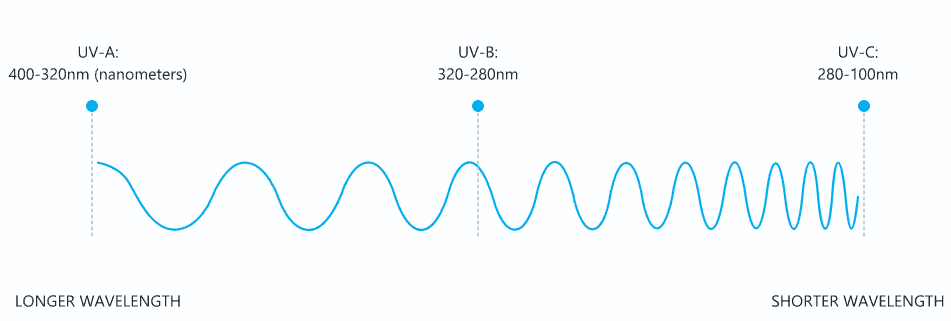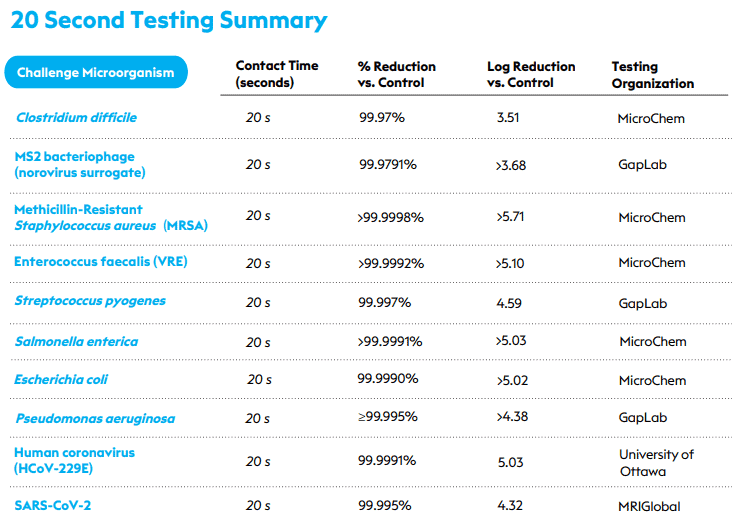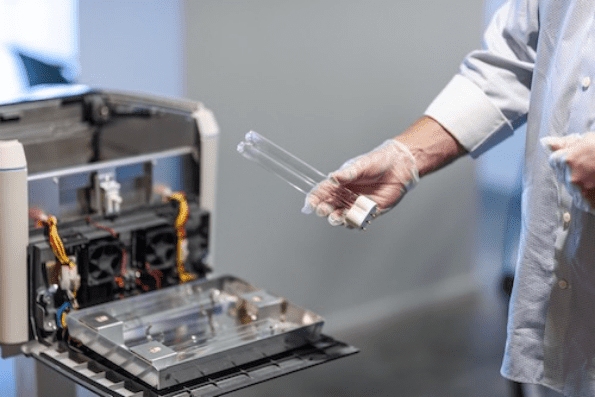What is UV-C?
You’ve likely heard of ultraviolet light before; probably in the context of sun block or a tanning bed. But UV light exists on a spectrum. At the short end of that spectrum is UV-C with a wavelength of 200 to 280 nanometers. For perspective on how small that is, a nanometer is one billionth of a metre!
The most amazing part about UV-C light is that it has been proven to inactivate dangerous germs like bacteria and viruses.1 The light attacks these organisms at a molecular level. This prevents the germs from reproducing, rendering them harmless.
The History of UV-C
The use of UV light has been known for many years to have a germicidal effect, meaning it can destroy harmful microorganisms. In 1904, a breakthrough discovery showcased the greatest germicidal effectiveness was found to be within the UV-C region in the UV spectrum.2 Since then, further discoveries like this and along with ongoing research, continue to prove the effectiveness of UV-C wavelengths against pathogenic microorganisms.
UV-C light vs. superbugs

UV-C light vs. superbugs
The UV spectrum is simply divided into three classifications based on wavelength’s interaction with molecules:
1. Ultraviolet-A (UV-A),
2. Ultraviolet-B (UV-B) and
3. Ultraviolet-C (UV-C).
UV-C light is often considered the “germicidal” spectrum because of its effects against bacteria and viruses.3 Due its proven ability to effectively inactivate viruses and bacteria, the adoption of UV-C is key to limiting the spread of infectious diseases.
The technology is important because of its ability to disrupt stable bonds in organic compounds and its ability to cause a permanent change to the bases of DNA and RNA structure. This is important because DNA and RNA serve as the code for bacteria to replicate. UV-C light damages this structure and inhibits germs from further dividing and infecting other host cells.
UV-C technology works through line of sight, only environments or surfaces that are directly exposed to the light will be sanitized.
Is UV-C safe?
Anyone who has suffered from a sunburn can attest to the harmful impacts that too much UV light can have. However, the sun transmits UV-A and UV-B light whereas UV-C light is blocked by the ozone layer and it is not something that we are regularly exposed to.
Just like sunlight, if exposed directly to high doses, UV-C light can be harmful to human skin and eyes. Therefore, there are risks associated with the use of UV-C light and appropriate precautions must be taken when handling devices with UV-C technology.
CleanSlate UV devices have been certified for regulatory compliance and follows safety standards regulated by the EPA and Industry Canada.*
The Data that Proves it All
We believe in using evidence-based data to showcase the performance of CleanSlate UV. Many tests have been conducted to test the effectiveness of CleanSlate UV. Most recently, CleanSlate UV has tested against SARS-CoV-2, the virus causing COVID-19 and found a 99.995% reduction rate!
CleanSlate UV is continuously testing and creating research studies in collaboration with independent and public institutions to improve product performance.



